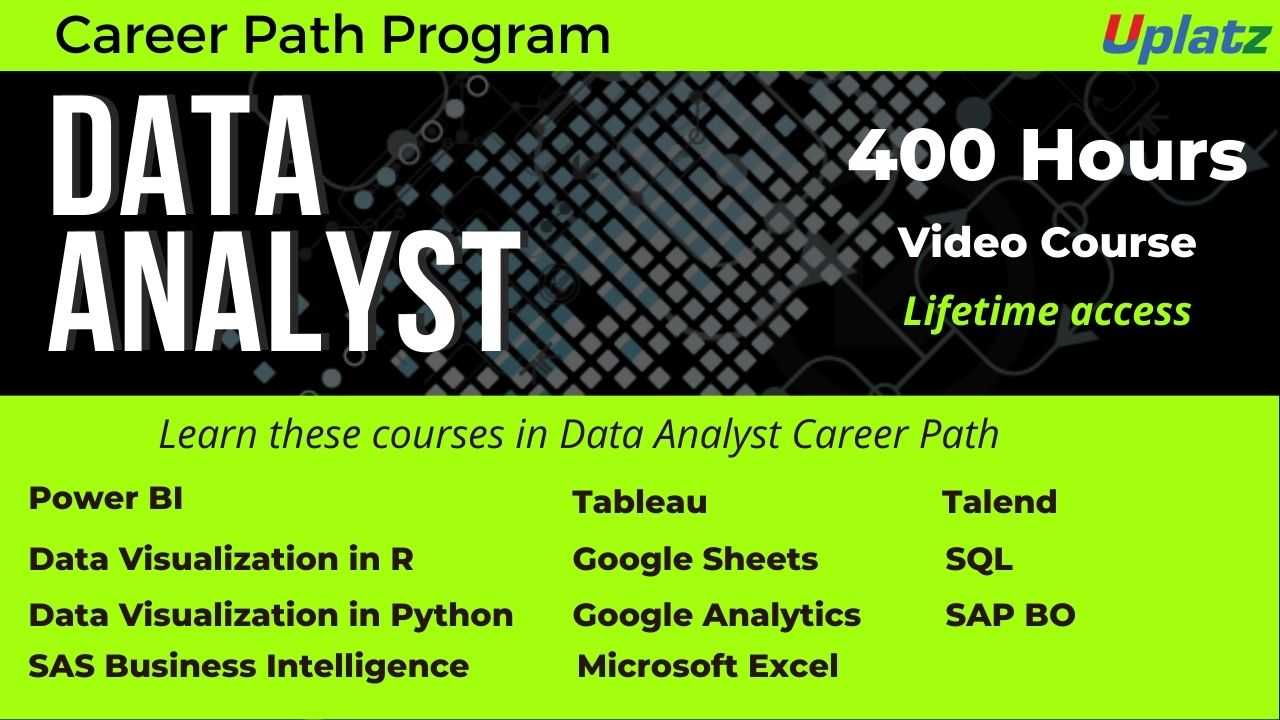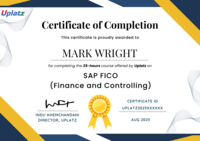Insights Analyst Career Path
Transform business decisions with data-driven insights—master analysis, reporting, and strategic storytelling as an Insights Analyst Price Match Guarantee
Full Lifetime Access
Access on any Device
Technical Support
Secure Checkout
Course Completion Certificate
Price Match Guarantee
Full Lifetime Access
Access on any Device
Technical Support
Secure Checkout
Course Completion Certificate
 92% Started a new career
BUY THIS COURSE (
92% Started a new career
BUY THIS COURSE (USD 45 USD 139 )-
 88% Got a pay increase and promotion
88% Got a pay increase and promotion
Students also bought -
-

- Career Path - AI/ML Research Scientist
- 200 Hours
- USD 45
- 368 Learners
-

- Career Path - Data Analyst
- 400 Hours
- USD 45
- 6488 Learners
-

- Career Path - Financial Analyst
- 350 Hours
- USD 45
- 453 Learners

Insights Analyst Career Path – Self-Paced Online Course
Unlock your career potential in data and analytics with this comprehensive course tailored for aspiring Insights Analysts. This self-paced program equips you with the technical, analytical, and business communication skills needed to transform raw data into actionable business insights.
Learn how to collect, clean, analyze, and present data to stakeholders across business units. From Excel and SQL to BI tools like Power BI and Tableau, this course walks you through the tools, frameworks, and soft skills required to succeed as an Insights Analyst.
Whether you're starting out or transitioning from a related role like data analyst, marketing analyst, or operations, this course will prepare you for career success with real-world examples and expert-led video lessons.
Oops! No Video Subscriptions
By the end of this course, learners will be able to:
- Understand the responsibilities and career progression of an Insights Analyst
- Work with data to derive actionable business insights
- Use tools like Excel, SQL, Power BI, and Tableau to create interactive reports and dashboards
- Apply statistical techniques to interpret trends, patterns, and customer behavior
- Conduct market, customer, and performance analysis for business decision-making
- Communicate findings clearly through data storytelling and visualizations
- Collaborate across product, marketing, and sales teams
- Prepare for certifications and interviews in data and business analytics
Syllabus:
- Introduction to Insights Analytics
- Overview of insights analysis
- Understanding business impact and data-driven decision-making
- Data Collection and Cleaning
- Gathering data from multiple sources
- Data preparation and transformation (Excel, SQL, ETL basics)
- Exploratory Data Analysis (EDA)
- Detecting trends, patterns, and anomalies
- Descriptive statistics and data summarization
- SQL for Data Analysis
- Writing queries, joins, filters, aggregations
- Subqueries, CTEs, and window functions
- Data Visualization and Reporting
- Power BI and Tableau fundamentals
- Building dashboards, KPIs, and visual storytelling
- Customer and Market Insights
- Segmentation, retention, churn analysis
- Market research and competitor analysis
- Business Performance Analysis
- Sales, revenue, and campaign performance tracking
- Metrics and KPIs for business units
- Presenting Insights and Recommendations
- Communicating data findings to non-technical stakeholders
- Insight reports, executive summaries, and storytelling
- Real-World Case Studies
- Industry examples: retail, healthcare, fintech, and marketing
- Role-based use cases and analysis projects
- Career Planning & Certification Prep
- Resume writing, portfolio creation, and interview prep
- Certification pathways in data and insights roles
Upon successful completion, learners will receive a Course Completion Certificate from Uplatz, confirming their expertise in data analysis, reporting, and business insight generation.
This Uplatz certification demonstrates your ability to work with data tools, interpret trends, and contribute to data-driven decision-making across industries. It adds significant value to your resume and helps you stand out in roles such as BI Analyst, Market Analyst, and Customer Insights Specialist.
The course also prepares learners for entry-level and intermediate certifications such as:
- Microsoft Certified: Power BI Data Analyst Associate
- Google Data Analytics Professional Certificate
- Tableau Desktop Specialist
- SQL for Data Analysis Credentials
This certification opens the door to insights, analytics, and strategy roles across multiple departments.
Insights Analysts are in high demand as businesses rely heavily on data to drive strategic decisions, understand customers, and optimize performance.
Career Opportunities Include:
- Insights Analyst
- Business Intelligence (BI) Analyst
- Marketing or Customer Insights Analyst
- Research Analyst
- Product Analyst
- Sales or Revenue Analyst
- UX Researcher
Industries Hiring:
Finance, retail, healthcare, SaaS, e-commerce, telecom, logistics, media, and marketing agencies.
Career Advancement Options:
- Senior Insights Analyst
- Insights Manager or BI Manager
- Director of Analytics or Head of Insights
- Chief Analytics Officer (CAO) or Chief Data Officer (CDO)
With the growing value of data in all decision-making, this role provides excellent career stability, cross-functional exposure, and long-term leadership potential.
1. What does an Insights Analyst do?
An Insights Analyst transforms raw data into actionable recommendations to support business strategy, marketing, and product development.
2. How is an Insights Analyst different from a Data Analyst?
While both work with data, Insights Analysts focus more on business interpretation and communicating strategic implications of data.
3. What tools are commonly used by Insights Analysts?
Excel, SQL, Power BI, Tableau, Google Analytics, and statistical tools like R or Python (for advanced roles).
4. What is data storytelling?
It's the art of using visuals and narratives to communicate data-driven insights clearly to stakeholders.
5. How do you prioritize which insights to share?
By aligning insights with business goals, KPIs, and the audience’s decision-making needs.
6. What is cohort analysis and where is it used?
It’s grouping users by shared characteristics over time (e.g., signup month) to track behavior, often used in retention analysis.
7. What’s the difference between descriptive and predictive analytics?
Descriptive tells you what happened; predictive uses data to forecast future trends or behavior.
8. How do you ensure data quality?
By performing validation checks, using clean data sources, handling missing values, and cross-referencing with trusted reports.
9. What types of dashboards would you build for marketing teams?
Campaign performance, customer acquisition, engagement metrics, and ROI tracking dashboards.
10. What challenges do Insights Analysts face?
Data silos, lack of data literacy in teams, unclear KPIs, and communicating complex results to non-technical audiences.
1. Who should enroll in this course?
Aspiring analysts, marketing professionals, data-driven decision-makers, and anyone transitioning into business or customer insights roles.
2. Is this course self-paced?
Yes, learners can access video lessons and content anytime, with lifetime access.
3. What tools will I learn in this course?
SQL, Excel, Power BI, Tableau, and data visualization techniques.
4. Will I get a certificate after completion?
Yes, a Course Completion Certificate from Uplatz is awarded to every learner who completes the course.
5. Is this course beginner-friendly?
Yes. No prior analytics experience is required. It starts from basics and progresses to advanced topics.
6. Does the course include practical examples?
Absolutely. Real-world case studies and hands-on exercises are integrated into the curriculum.
7. Can this course help me get a job?
Yes. It builds a portfolio of insights skills, supports resume building, and prepares you for interviews.
8. Is this course useful for marketing and product professionals?
Definitely. Insights Analysts often support marketing and product decisions through customer behavior analysis.
9. Does this course help with certifications?
Yes. It prepares you for Power BI, Tableau, and Google Data Analytics certifications.
10. Will I receive support during the course?
Yes. You’ll get expert help, access to discussion forums, and additional learning resources.









